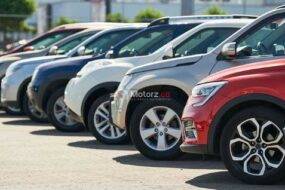Car Batteries of Tomorrow Advancements in Energy Storage In the ever-evolving landscape of automotive technology, one aspect stands out as a driving force behind innovation—car batteries. As we look towards the future, advancements in energy storage are set to redefine the way we perceive and utilize electric vehicles. This article explores the cutting-edge developments in car batteries that promise to shape the transportation industry and contribute to a sustainable future.
Lithium-ion Dominance:
Lithium-ion batteries have been the backbone of electric vehicles (EVs) for years, offering a high energy density and a relatively long lifespan. However, researchers are tirelessly working to enhance their performance further. New electrode materials, such as silicon anodes and solid-state electrolytes, are being investigated to increase energy density, improve charging times, and address safety concerns associated with traditional lithium-ion batteries.
Solid-State Batteries
One of the most promising breakthroughs in energy storage is the development of solid-state batteries. Unlike liquid electrolytes in conventional batteries, solid-state batteries use solid conductive materials, which not only increases energy density but also addresses safety issues. These batteries have the potential to offer longer ranges, faster charging times, and improved durability, making them a game-changer for electric vehicles.
Graphene: The Wonder Material
Graphene, a single layer of carbon atoms arranged in a hexagonal lattice, is often referred to as a wonder material. In the realm of car batteries, graphene is showing immense promise. Its exceptional conductivity and lightweight properties make it an ideal candidate for enhancing battery performance. Graphene batteries could revolutionize electric vehicles by providing faster charging, longer range, and increased overall efficiency.
Wireless Charging Technology:
Imagine a world where electric vehicles charge without any physical connection. Wireless charging technology is inching closer to making this a reality. Inductive charging, where electricity is transferred through electromagnetic fields, is gaining traction. This not only simplifies the charging process for users but also opens up opportunities for autonomous charging, where vehicles can charge themselves without human intervention.
Artificial Intelligence Integration:
The future of car batteries is not just about physical components; it’s also about intelligent management. Artificial Intelligence (AI) is being incorporated into battery management systems to optimize charging and discharging processes. AI algorithms can learn from driving patterns, weather conditions, and user preferences to maximize the efficiency and lifespan of car batteries.
Recyclability and Sustainability:
As the demand for electric vehicles grows, so does the concern about the environmental impact of battery disposal. Researchers are focusing on developing sustainable and recyclable battery technologies. From using eco-friendly materials to implementing efficient recycling processes, the goal is to create a closed-loop system where the environmental footprint of car batteries is minimized.
Energy Storage beyond Vehicles:
The advancements in car batteries are not limited to electric vehicles alone. The technology is finding applications in various sectors, including renewable energy storage. Electric vehicles could potentially serve as mobile energy storage units, contributing to a more decentralized and resilient energy infrastructure.
Conclusion
As we stand on the brink of a new era in transportation, the evolution of Car Batteries of Tomorrow is a critical factor that will shape the future of mobility. From the dominance of lithium-ion to the promises of solid-state and graphene technologies, the advancements in energy storage are unlocking new possibilities for electric vehicles. The synergy of artificial intelligence, wireless charging, and sustainability initiatives further highlights the multifaceted approach towards creating the car batteries of tomorrow. The road ahead is not just about reaching our destinations but doing so in a way that is efficient, sustainable, and powered by the innovations that continue to redefine our automotive landscape.





